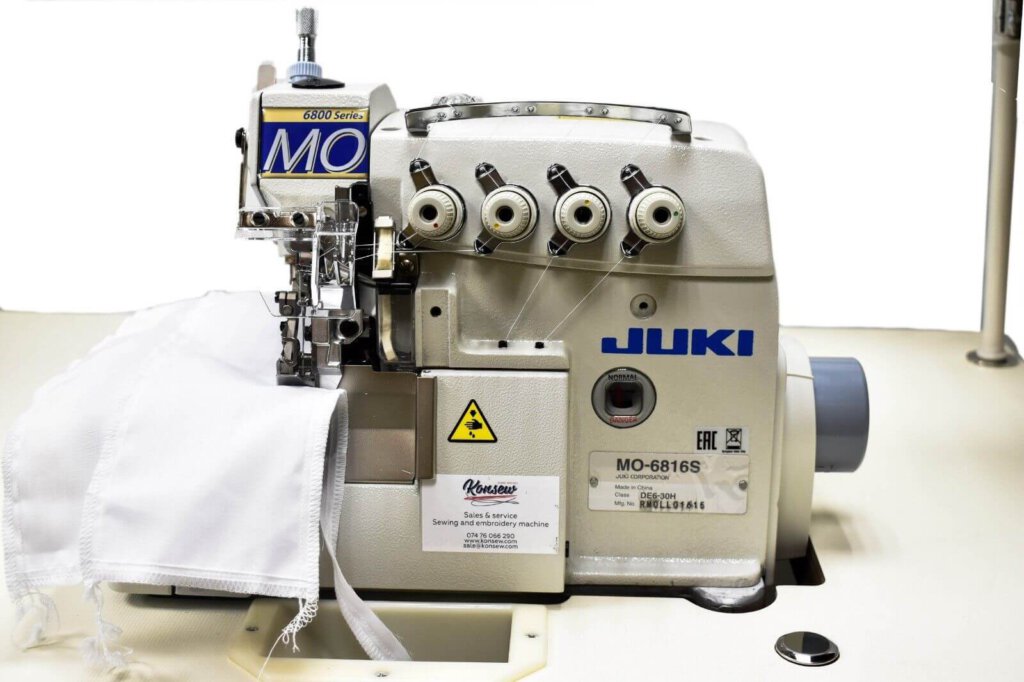feature extraction in high-speed sewing
This paper presents the development of a signal acquisition and analysis equipment for measurement of sewing parameters on a high-speed overlock sewing machine. The objective of the work was to provide investigators of the textile area with hardware and software to ease the investigation on the dynamical behaviour of the following sewing parameters: force on needle bar, presser- foot and thread tensions. It should also have enough flexibility to incorporate further signal entries, and provide the user with tools to ease the gathering and analysis of tests on different materials, sewing speeds and machine configurations and settings. Outputs for actuators to implement closed-loop control strategies are also available. The paper will present an overview of the system, which is a development of earlier hardware and software and will focus on the results concerning the measurement of the force on the needle-bar, parameter is important to investigate on needle penetration force in fabrics during sewing. Several signal-processing implemented and tested algorithms, that aim to automate the detection of some characteristics, will be described. The purpose of this system, that implements some novel strategies, is to develop an add-on kit to apply to different sewing machines, but presently it has been implemented on a PC as a quality assessment system which will be used by textile technicians to build a quality database.VS Sewing Machines
Present trends in the textile industry point to the reduction of the order sizes and to greater demands on shorter delivery times and higher quality. This factor leads apparel manufacturers to adopt new management strategies to enable a quick market response. On the other hand, in the sewing room, manufacturers must be able to quickly reconfigure their production system and equipments to cope with the rapidly changing needs of the materials that are being processed. The setting of sewing machines can, in this context, be a task that introduces si@icant time loss, as sewing technicians set the machines on base of experience and empirical methods. A scientifical approach to the behaviour of sewing parameters has been undertaken only in the last few years [l-41 and has revealed itself to be extremely difficult. A. Objectives The present project aims to accomplish the following To ease the acquisition, storage and visualisation of the different signals acquired; To provide the user with analysis tools other than a simple time representation of the signals; To investigate on the usefulness of analysis tools used in other signal processing areas; To be itself a modular system, with expandable hardware so as to make it possible to accommodate other signal sources in addition to the ones considered at this moment, and also adding outputs for a control system based on the information collected in the first stages of this work. The-aim is to produce an add-on kit applicable to different sewing machines

11. HARDWARE A. Sensors Two types of sensors were used to measure the above stated parameters: 0 Piezoelectric washers Nstler) were built directly into the needle and presser-foot bars to measure force on these components; 0 The sensing of thread tensions was achieved measuring the strain in cantilever beams put into the thread paths, as close as possible to the needle and loopers. Since quick variations on all of these parameters were expected, it was necessary to select components with a proper bandwidth. The piezoelectric sensors selected have a resonant frequency in the order of 200 KHZ, which lies very much above the maximum working frequency of the machine (7500 rpm = 125 Hz). In the case of the thread tension sensors, semiconductor strain gages were used to measure the strain produced in the beam. Calculation of the dimensions of a beam with a natural frequency of 5 KHz or above showed that the strain produced on its surface for the expected force values (max. 500 cN) would be too small to be picked up adequately by resistive strain gauges. Semiconductor strain gauges were used instead. This kind of strain gauge has a poorer performance concerning temperature drift and electromagnetic interference, but a much higher sensitivity. The sensor, manufactured by a Czech development institute, revealed to have very low temperature and mechanical drift, good frequency response and sensitivity. B. Data acquisition Hardware The hardware is divided into two blocks: 0 A Data Acquisition-board plugged in a PC 0 External signal conditioning hardware for the sensors. For the data acquisition, a LAB-PC+ board from National Instruments was selected, already tested in earlier experimentation. This board, although simple and economic, supports a sequential sampling of 8 analog channels at 83.33 KHz , features 3 parallel digital 1/0 ports and 2 analogue output channels. Concerning the signal conditioning circuitry, the ollowing requirements should be met: 0 All signal amplifiers should be gain programmable, since significant variations of the signals’ amplitudes are expected due to the testing at different sewing speeds and with different materials. Use of the LAB- PC’s own gain programming is to be avoided because at higher gains settling times of the board’s amplifiers and sample-and-hold circuits do not allow high sample rates. 0 The signal conditioning board for the piezoelectric sensors should include a peak detector for sensor calibration (as explained in Section 1II.C.)Addition of new signal conditioning boards should be possible in a simple way; 0 One of the boards should include conditioning of a signal coming from the machme motor: This “synchronisation signal” delivers a pulse at a specific point of the sewing cycle (stitch) and is fed into the data acquisition board to trigger acquisitions and to provide data to measure sewing speed.

Recent Comments